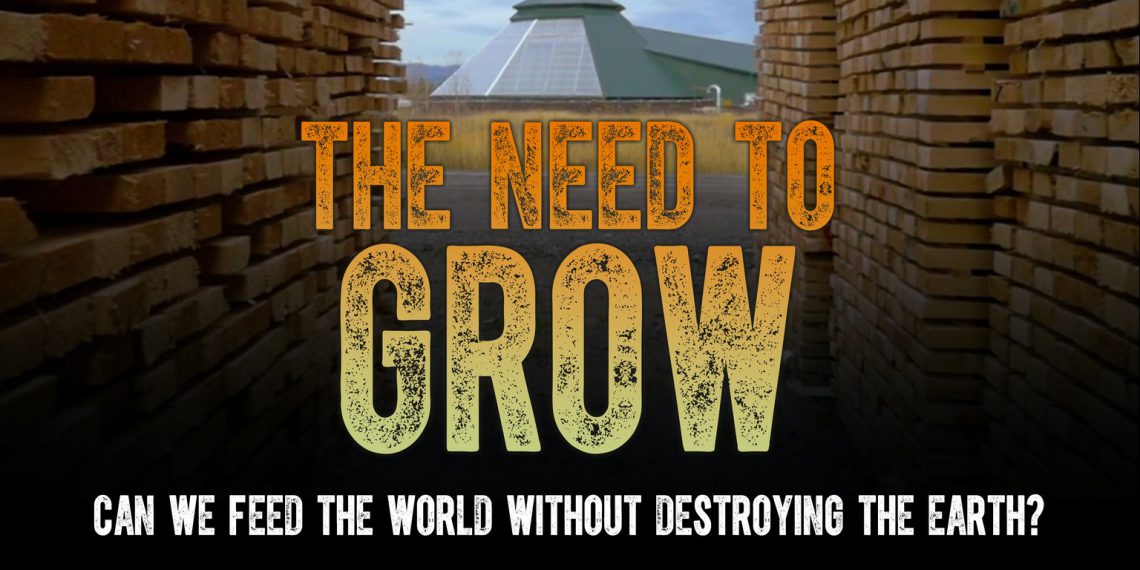
A Reflection on The Need to Grow
For those of you unfamiliar with The Need to Grow, the documentary food film directed by Rob Herring and Ryan Wirick and narrated by Rosario Dawson, I would encourage you to stream it free online before reading further. Spoiler alerts below!
Food is a form of Energy, let’s make it renewable.
The film follows the stories of Alicia Serratos, a 13 year old girl scout activist dedicated to convincing the Girl Scouts to introduce a non-GMO cookie, Erik Cutter, the director of Alegria Fresh and a leader in sustainable, low-impact farming, and Michael Smith, a former video game designer, physicist and mad genius who has invented the Green Power House (GPH).
Each of their stories is wonderfully shot by Herring and Wirick, and by the end of the film each character’s personal set-backs in their quest toward big new ideas in sustainable farming stung as if I was right there with them. But the beauty of this film is not in the tension when Michael’s GPH burns down, or when Alicia is refused entry to the Girl Scout HQ clubhouse with her petition. It is in the strong link between food, sustainability, and renewable energy that pervades the three stories.
Speaking from personal experience, food and renewable energy have become almost fully dissociated concepts in today’s modern environmental discussions. Sure, both relate to sustainability and deserve our attention, but they are distinct topics right? Or, as The Need to Grow paints the picture, perhaps not. In fact, after watching the film, my first and most enduring thought was that redefining the scope of renewable energy in each of our minds may in fact be the first step towards arriving at a 100% renewable energy future for the United States.
The truth is, the energy we are closest to us as human beings is not carried in high-voltage power lines over our heads. Nor is it the power we consume to run our washing machines and turn on our televisions. It is the energy we consume on a daily basis, from our hurried morning breakfast as we head off to work to the family barbecue we look forward to on the weekend. The link between food energy and power-grid energy is nothing more than a mental chasm – a gap in the way we are taught to think about sustainability and environmental impact.
The link between food energy and power-grid energy is nothing more than a mental chasm – a gap in the way we are taught to think about sustainability and environmental impact.
Some systems are too large to change overnight. Our modern agricultural system makes sense for many people – it feeds millions, and we can’t expect families struggling with student debt, unemployment, and stagnant wages to transform into successful sustainable farmers overnight. But the danger comes when we stop questioning the system altogether. When we no longer are interested in where our food is grown and how it affects our bodies’ development when consumed. Alicia questioned our food system, and I was reminded just how difficult it can be to convince established businesses to rethink current practices when profits are at risk.
So it is no wonder that when we think of environmentalism, somehow the asparagus on our dinner plate is the last thing that comes to mind. In many ways, food has been successfully divorced from the environmental conversation by companies that benefit from the status quo methods of large agricultural production, consolidated cost-saving processing, and national distribution. The Need to Grow tells us that not only is food a key component of maintaining a healthy and productive environment for generations to come, but the soil that births our food is the single most important component of all.
Perhaps it is helpful to remind ourselves that that soil is the same soil we want to protect with the cessation of fracking. It is the same soil we want to maintain by preventing large environmental disasters like wildfires and hurricanes through a reduction in carbon emissions. And it is the same soil that our kids and grandkids will rely on for food, just as we do today.
This is something that Alicia, Erik, and Michael seem to intuitively understand. And yet I, who would consider myself an environmentalist, somehow had missed this fundamental connection between environmentalism, renewable energy, and food. I have since learned that not everyone has been as slow to the draw as I was. Of course, Michael has invented a rare technology that addresses both the need to revitalize crop soil, as well as generate renewable grid electricity in a highly efficient system. This technology continues to baffle and amaze me with its simplicity and potential to change farming and power production around the world. But there are also programs many organizations already moving toward regenerative agriculture that does not rely on chemical fertilizers, and clever engineers and farmers are creating ways to merge solar farms with food farms, maximizing the utility of a piece of land while keeping the soil rich with nutrients in the panel’s part shade environment.
Food is energy and deserves to be discussed in the same breath with wind, water, and solar when discussing a transition to renewable energy in the United States. Healthy, sustainably farmed crops remove carbon dioxide from the atmosphere and revitalize our soil, as part a cycle that keeps local ecosystems and climate cycles healthy. But we have a long way to go before large-scale sustainable farming can replace current practices and take its place as a producer of renewable energy for all.